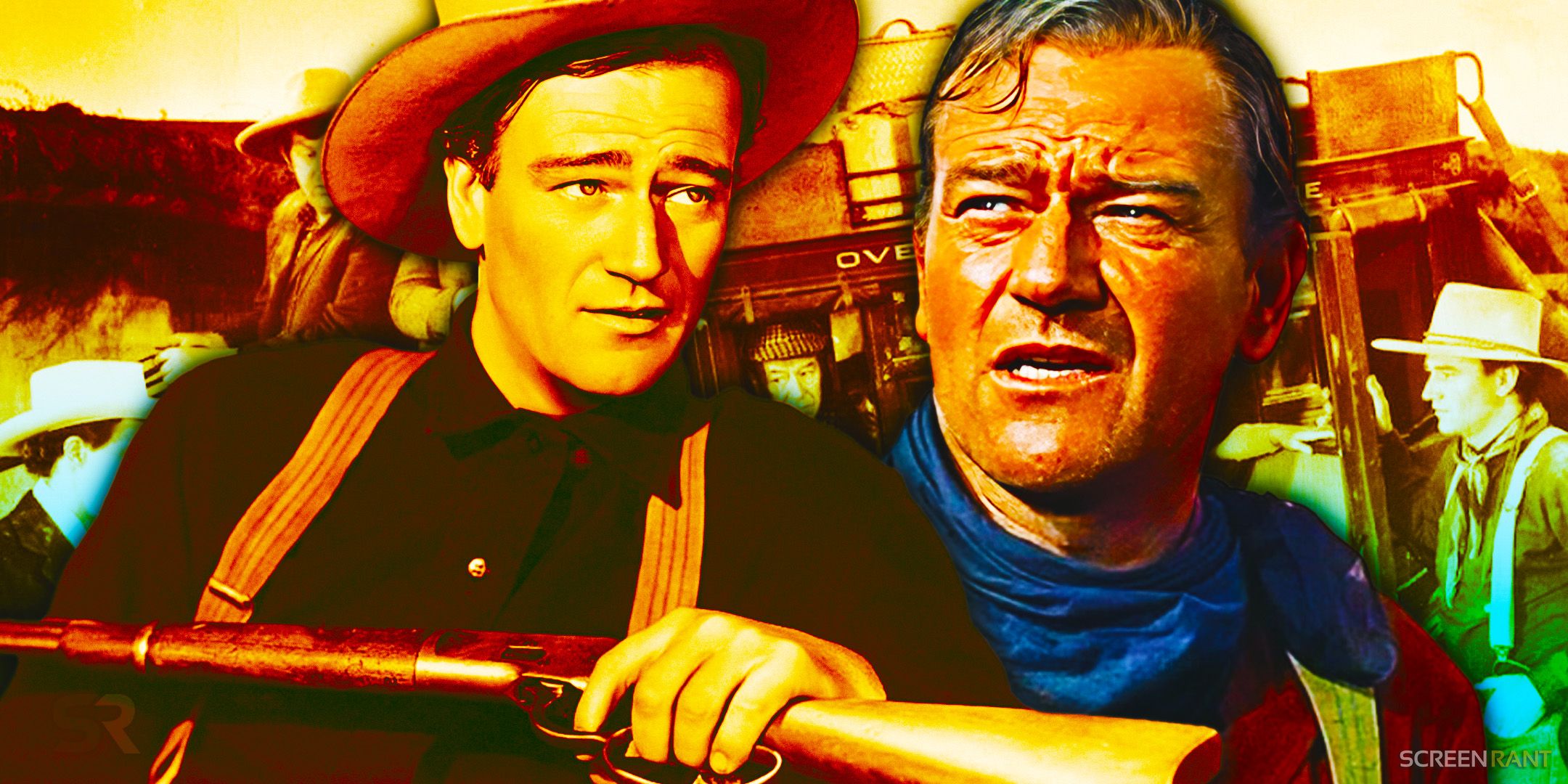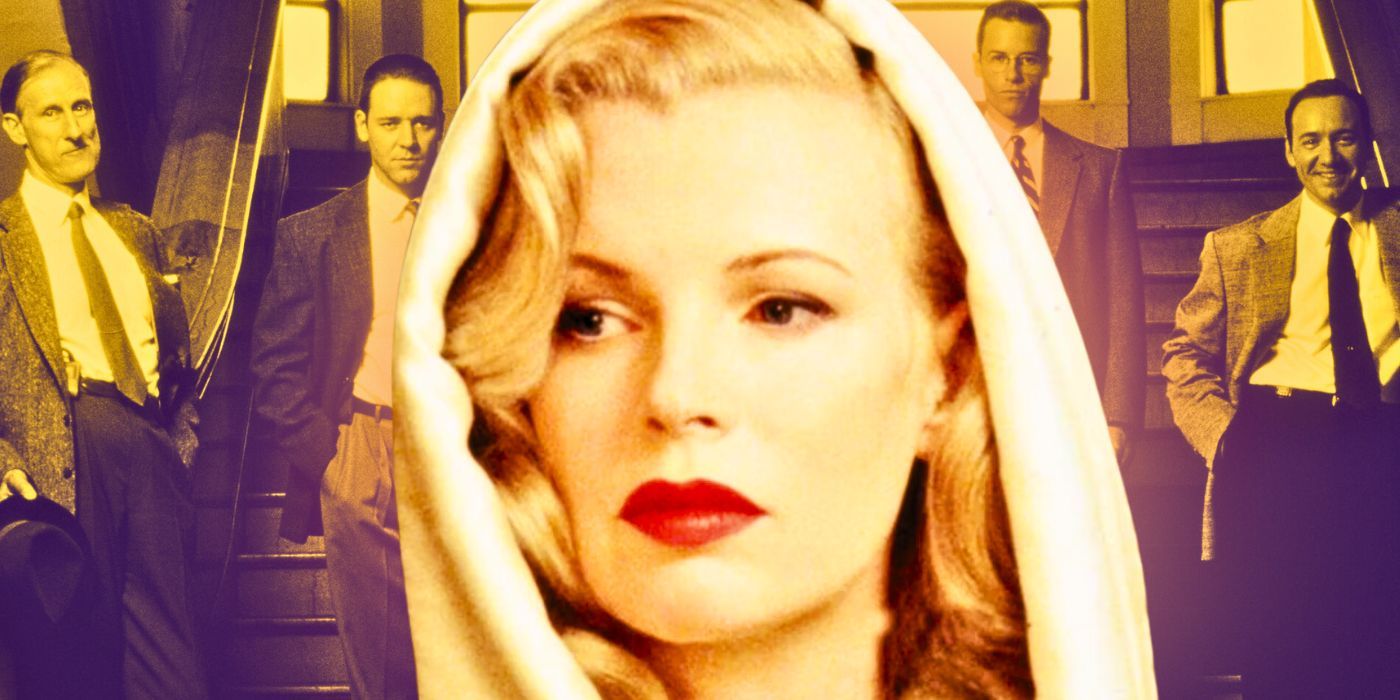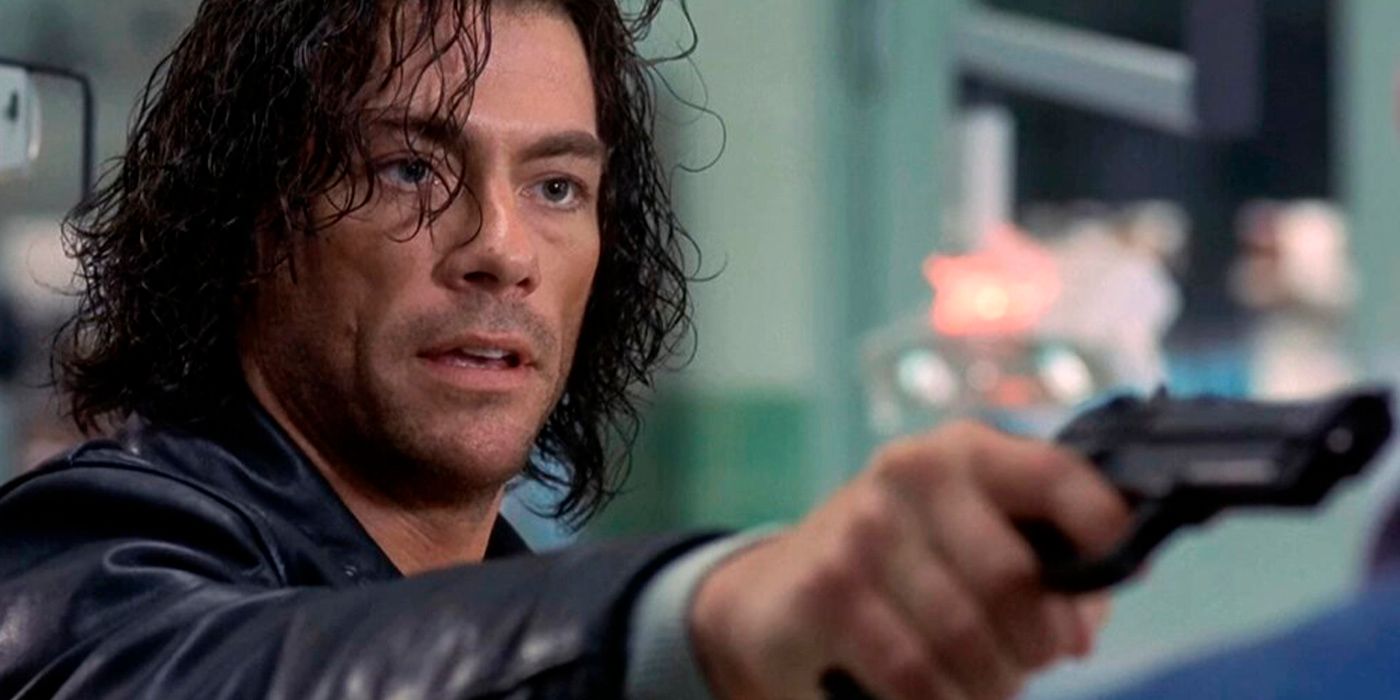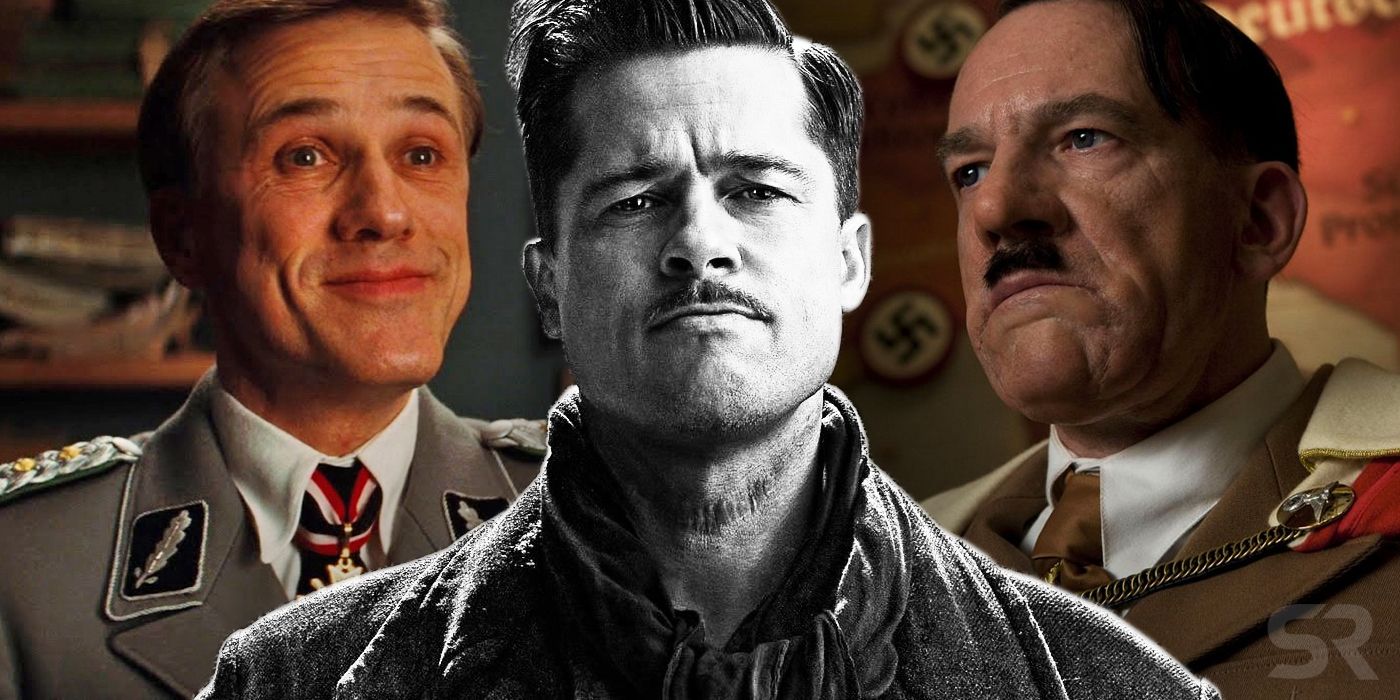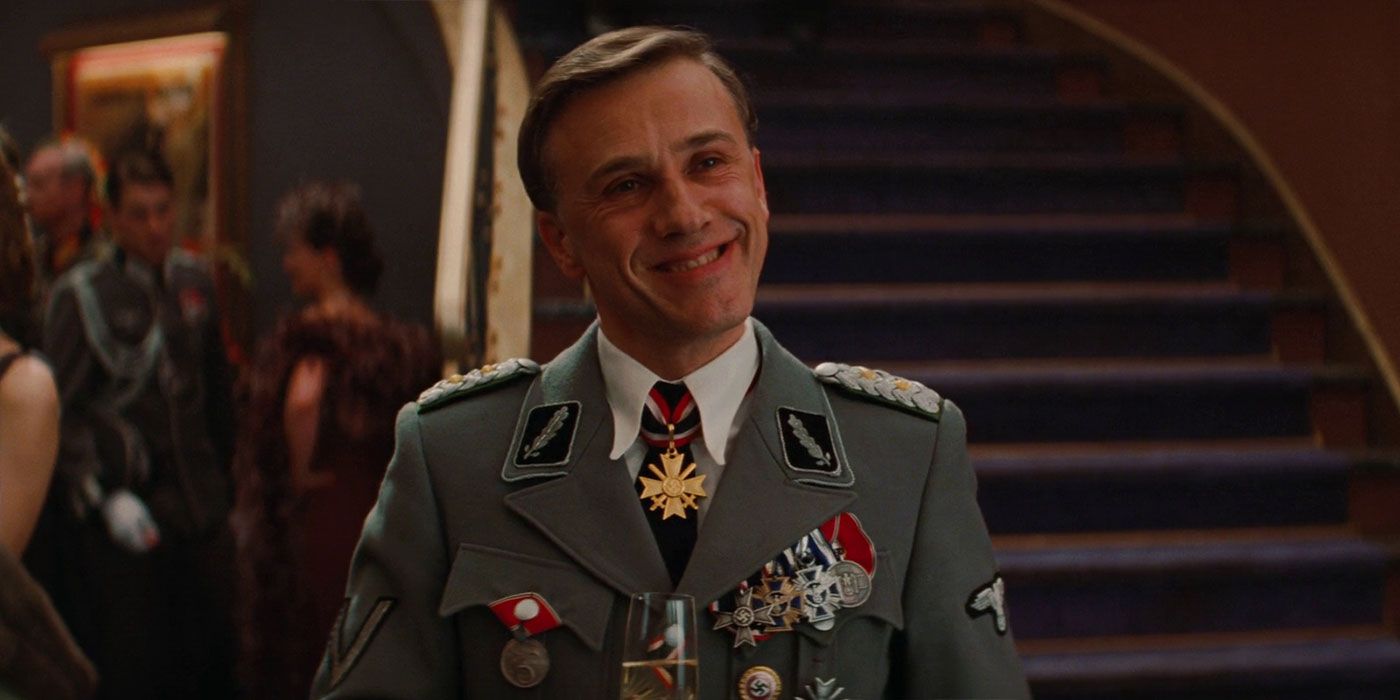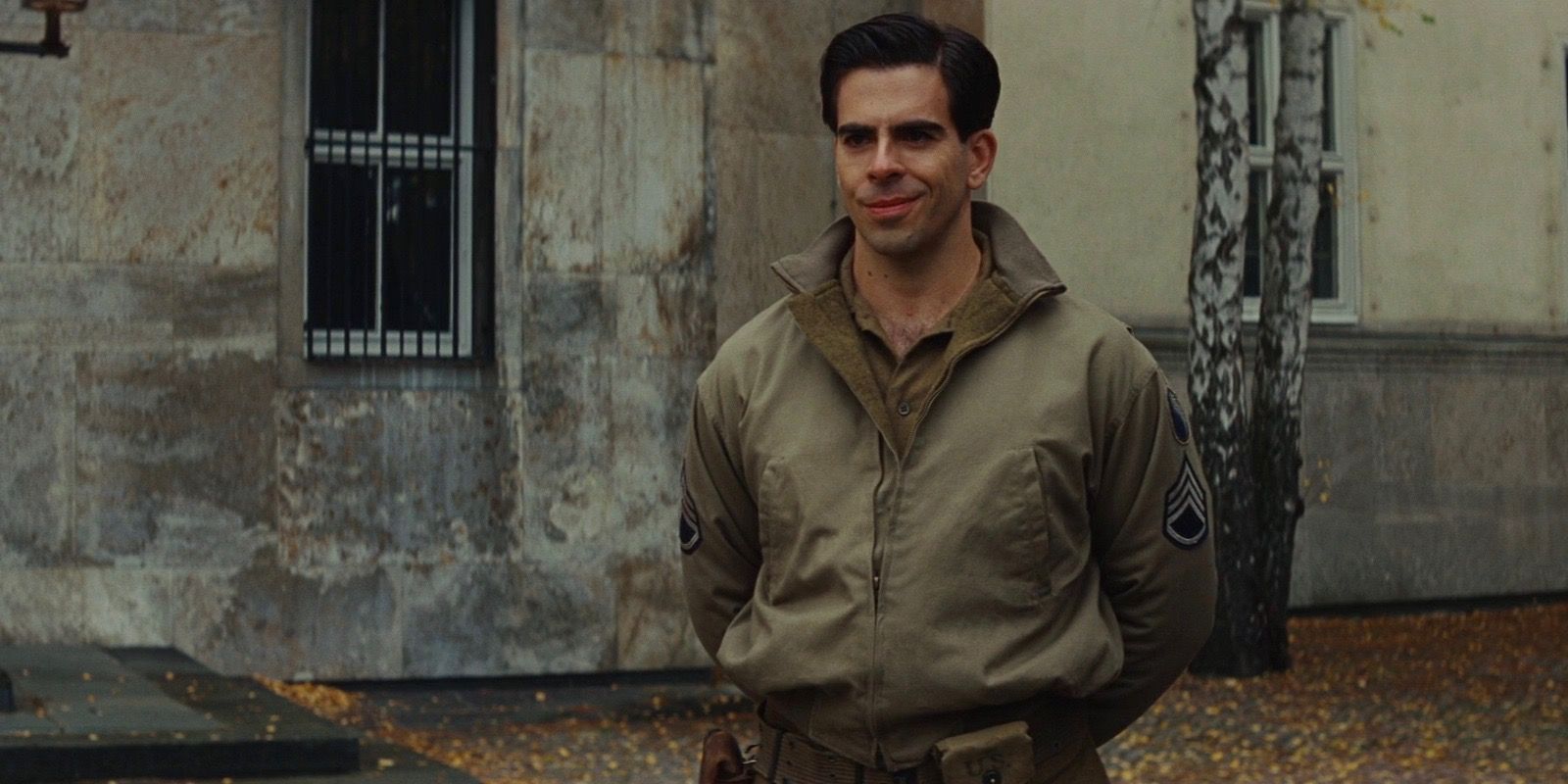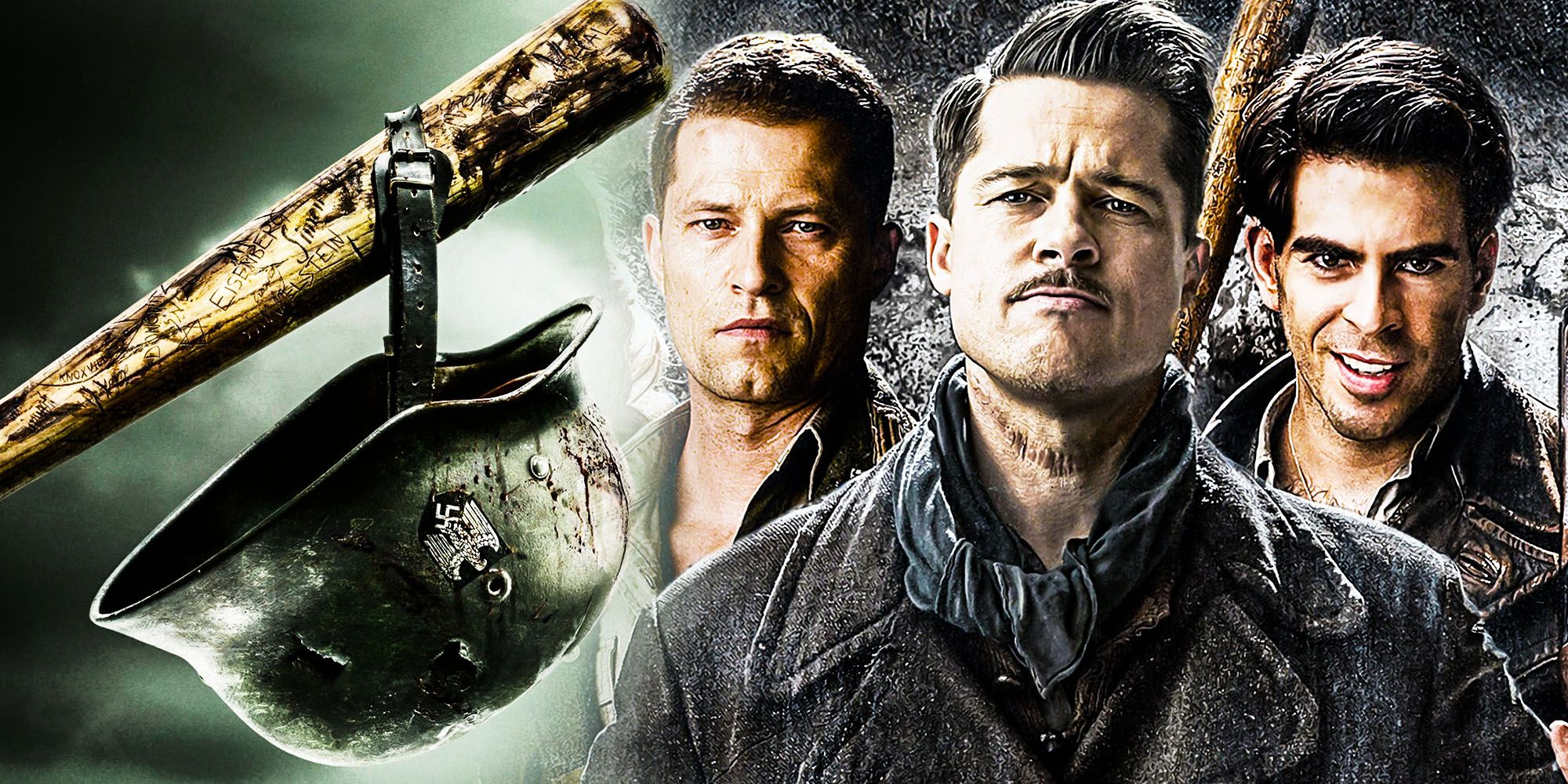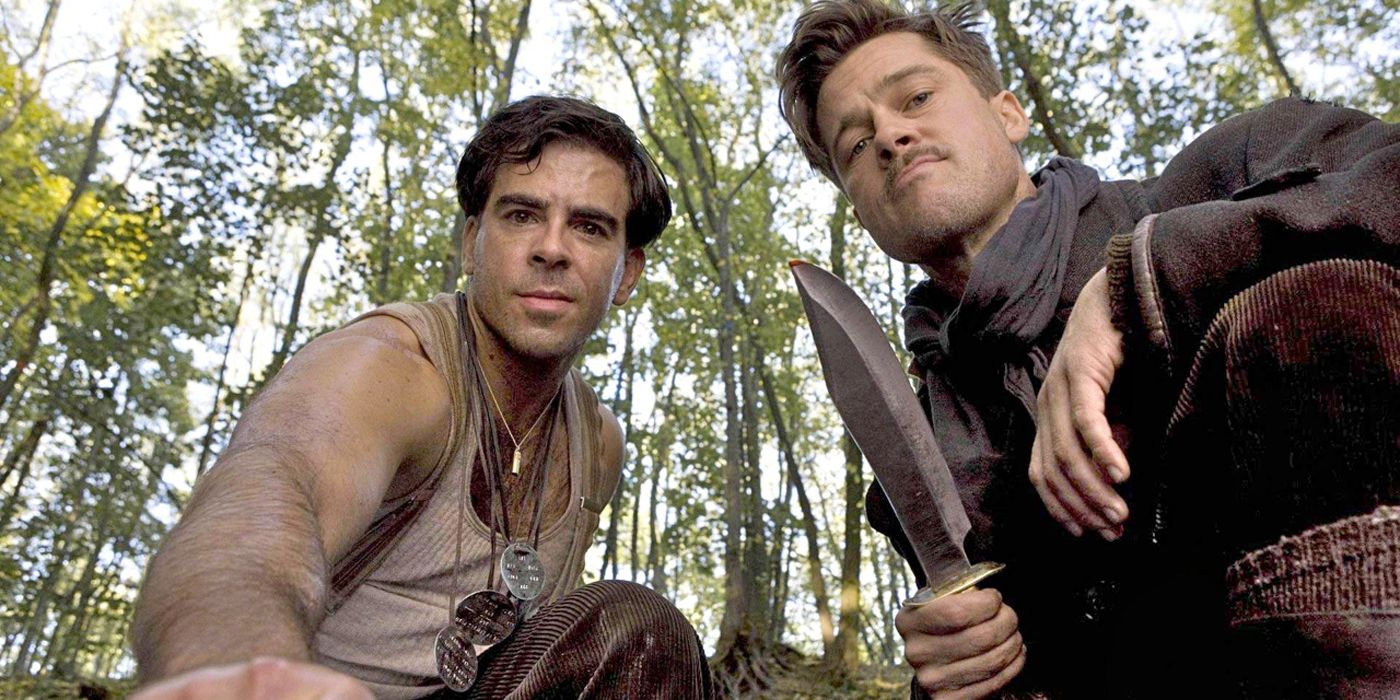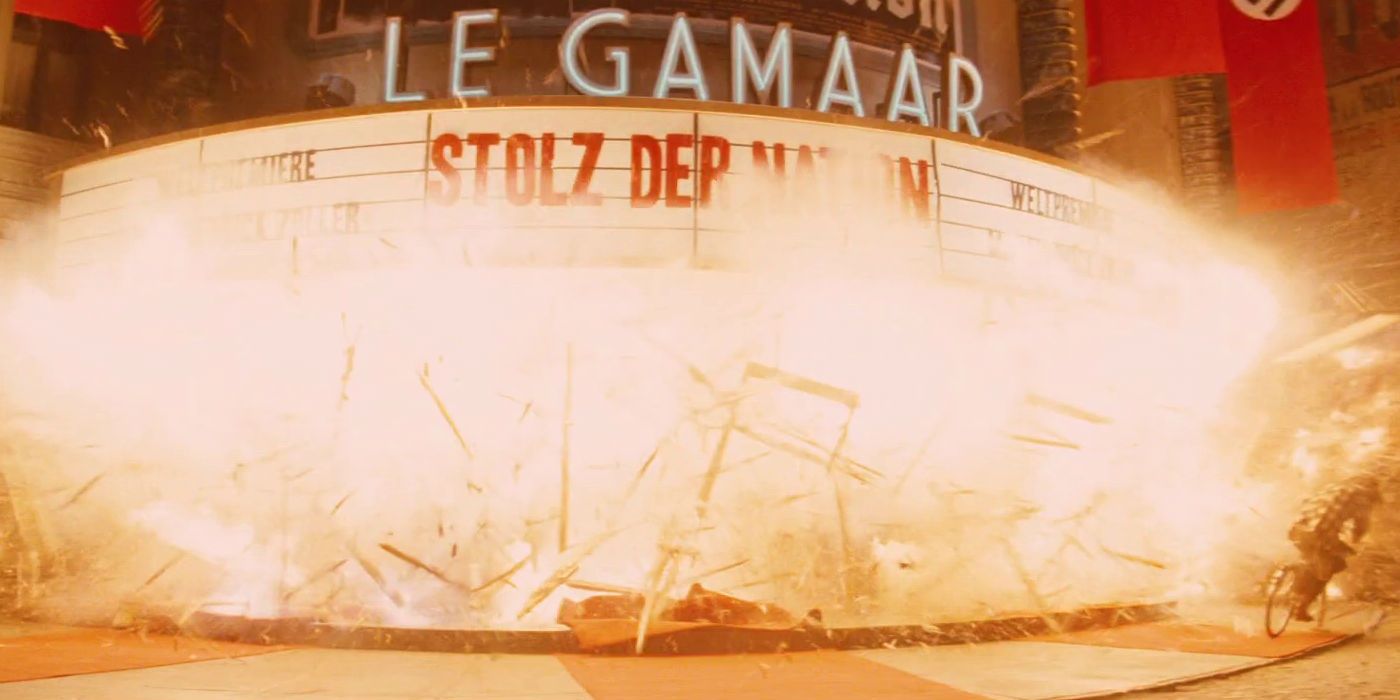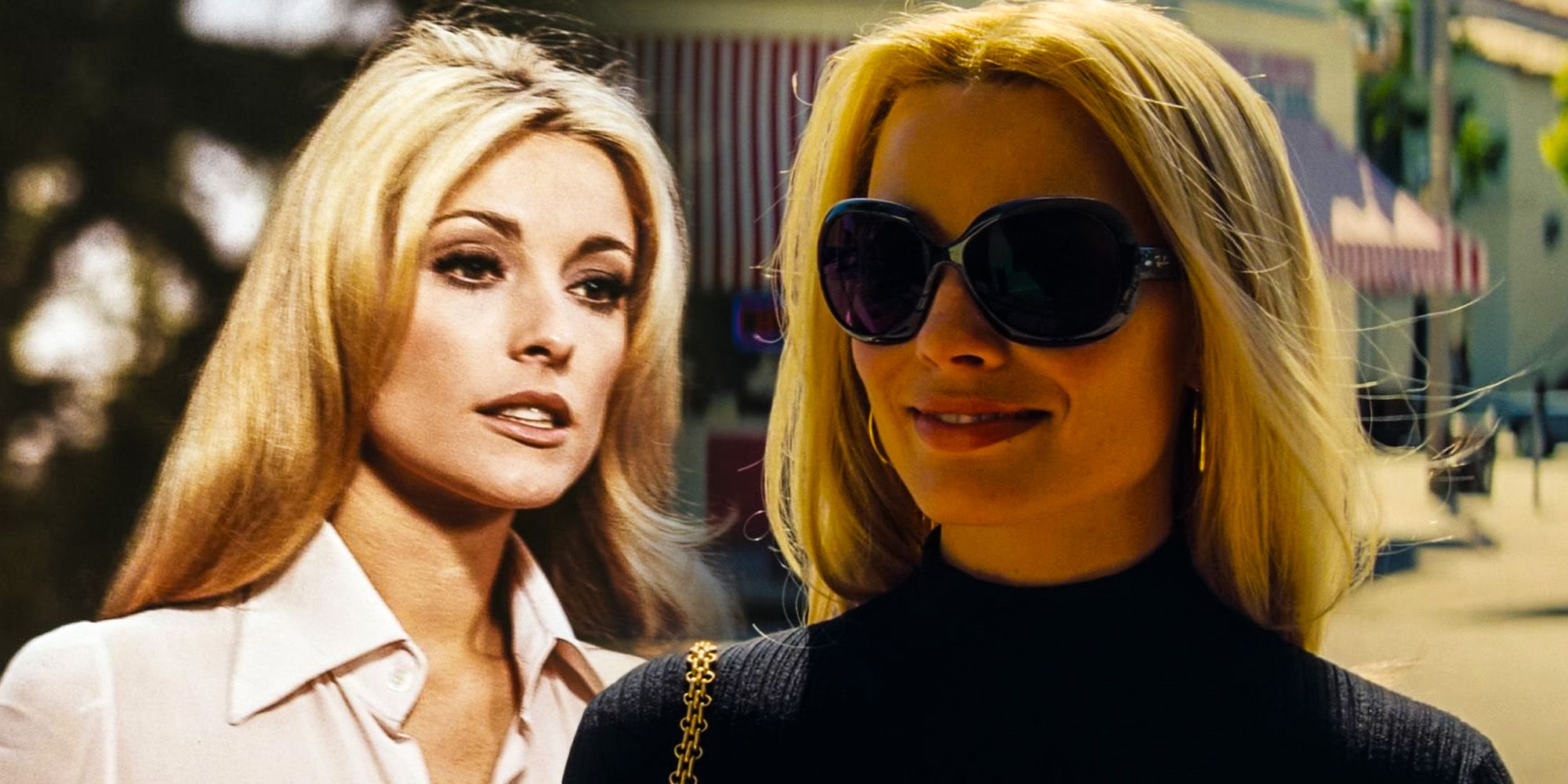Summary
- "Inglourious Basterds" is a successful fictional World War II film that takes big swings with history, including a fictional assassination of Adolf Hitler.
- The character Hans Landa, played by Christoph Waltz, is a fictional creation embodying various Nazi concepts and motivations, highlighting the complexity of the film's characters.
- While the film's story and characters are not entirely based on true events, there were real military units, like X-Troop and the American counterpart, that consisted of Jewish soldiers and focused on intelligence gathering and infiltrating Nazi operations.
Quentin Tarantino's World War II epic takes some big swings in terms of history leading to fans wondering about the Inglourious Basterds true story and if anything in the movie is real. A fascinating, fictional assassination of Adolf Hitler, the 2009 film is one of Tarantino's most successful. Produced for $70 million, the 2009 film earned over $321 million (via Box Office Mojo) and received eight Academy Award nominations, with Christoph Waltz winning Best Supporting Actor. Indeed, Inglourious Basterds is a big aspect of the so-called Tarantino Effect on Hollywood in the 21st century. Despite the prestige, the Inglourious Basterds true story isn't quite as true as the movie would have audiences believe.
Inglourious Basterds stars Brad Pitt as Aldo "The Apache" Raine, the leader of a Nazi-hunting military unit. Waltz portrays Hans Landa, a Nazi official known as the “Jew Hunter.” French actress Mélanie Laurent plays Shosanna Dreyfus, a Jewish woman hiding out in France after her family is murdered by Landa's men during the Inglourious Basterds opening scene. Tarantino spent a decade hammering out the script but what's real in the movie is complicated. While Tarantino authentically recreates the era of World War II, it's far from a true story.
The Jew Hunter Is Fake (But The Concept Is Definitely Real)
Hans Landa is a fictional creation of Tarantino, not an Inglourious Basterds true story or real-life historical figure. Instead, he's a fictional construct used to embody various Nazi concepts. During the opening act, Landa explains the motivations for his actions. He looks for Jewish people because that’s his job, not because he believes himself to be superior — but because he wants to be good at his job. The complexity of the character works in favor of the film overall.
Christoph Waltz's Landa ultimately betrays the Nazi party in order to survive, as he's an egotistical figure who will do anything to stay one step ahead. As a World War II movie villain, Landa checks off all the appropriate boxes: he’s engaging but dangerous and evil but weirdly charming. By the end, Tarantino doesn’t let him off the hook, though, as Pitt’s Aldo Raine leaves a permanent mark on Landa’s forehead: a swastika.
In real life, the Nazi party itself is “The Jew Hunter.” During World War II, their antisemitic views led directly to the Holocaust, which resulted in the death of approximately six million Jewish people. Since various high-ranking Nazi officials were known for orchestrating the systemic execution of Jewish people, it’s difficult to simply point the finger at one individual person. However, for a movie that tweaks a historically true story, a character such as the cleverly devious Landa can function as a representation of various ideas and/or people. Landa's late-in-the-day turn and defection were true of many high-ranking Nazis, with side characters reinforcing specific concepts associated with the Nazi party.
There Was a Real Inglourious Basterds Unit (With A Different Origin Story)
The Inglourious Basterds true story is partially found in a real military unit. The movie's Basterds consist of various Jewish-American soldiers, led by Brad Pitt's Lt. Aldo Raine. In the story, the Basterds rescue a German man, Hugo Stiglitz (Til Schweiger), who killed 13 Gestapo officers. The Basterds later conspire with English soldier Archie Hicox (Michael Fassbender) and German celebrity Bridget von Hammersmark (Diane Kruger), resulting in one of the film’s most dramatic sequences where Hicox sabotages his German soldier disguise by using the wrong three fingers to order beers.
In real life, there was indeed a Basterds-like unit that consisted of only Jewish men, but they didn’t take pleasure in murdering other humans, nor did they have aggrandizing nicknames like “The Bear Jew.” The real Inglourious Basterds true story was that they were a secretive British unit known as X-Troop (via Uproxx). Organized by Winston Churchill, the group of Jewish men from Germany and Eastern Europe reportedly focused on collecting information about the Nazis.
Having already experienced the horrors of Nazi antisemitism back home and wanted to protect their families or — in some cases — seek revenge. In the weeks leading up to the infamous D-Day in Normandy, France, X-Troop conducted reconnaissance missions. This real-life Inglourious Basterds team consisted of 88 men, 21 of whom were killed in action, with another 22 suffering wounds.
There Was Also An American Unit That Inspired Inglourious Basterds
In reality, while the Inglourious Basterds true story didn't play out in reality exactly as it did in the movie, it doesn't mean the real-life historical figures it was based on were any less brave or their stories less exciting. There was plenty of bravery to go around; the British weren't the only country with their own top-secret and skilled unit of Jewish spies during World War II. X-Troop may have been British, but the Inglourious Basterds of Tarantino's movie were more international and led by an American, Brad Pitt's Aldo Raine.
In real life, the United States had its own counterpart to Britain's X-Troop. Their true story began when two young Jewish refugees living in Brooklyn, Frederick Mayer and Hans Wijnberg, enlisted with the Office of Strategic Services – the precursor to the modern CIA – and volunteered to parachute into Austria deep behind German lines. They later added a third member, Franz Weber, a disillusioned Wehrmacht lieutenant who had had his eyes opened to the reality of Hitler's genocide and was horrified.
Under the codename Operation Greenup, the skilled, three-person team acted as behind-the-lines spies to infiltrate the Nazi operation. The makeup of the team and their goals may have been different, but according to some sources, Weber stated the trio "just wanted to kill Nazis" like Christoph Waltz's Hans Landa [via National WWII Museum]. They really weren't all that different from Inglourious Basterds' main cast.
The Real-Life Inglourious Basterds' Mission Was Different
Inglourious Basterds follows the titular group while setting up a plot to assassinate high-ranking Nazis, including Adolf Hitler, at a French movie theater owned by Soshanna. Inglourious Basters ends with the venue being set ablaze, trapping everybody inside. Hitler and Joseph Goebbels are murdered before the theater burns to the ground. Meanwhile, Raine and the other Basterds make a deal with Landa and his radio operator, who drive the Basterds to Allied territory where they also surrender, in accordance with their deal. However, Raine carves a swastika into Landa forehead before turning him over so that he will always be identified as a Nazi.
However, in reality, though Franz Weber may have just wanted to kill Nazis - and they did - their real mission was considerably less violent. The mission of the real-life Basterds centered on intelligence gathering. That's not to say there wasn't danger involved — at one point in their mission, Mayer was captured by the Gestapo and nearly tortured to death — but the main goal was to infiltrate. Mayer and Wijnberg confounded German intelligence by layering a map of Brooklyn over the city of Tyrol, Austria, where they were initially stationed, using Brooklyn landmarks that corresponded with ones in Tyrol and creating an entirely new set of code names for locations that stymied Nazi intelligence officers.
While Inglourious Basterds ended with Hitler and his top men being burned to death, in real-life, the dictator suffered a different fate. Nonetheless, the Allied team was victorious. Through Operation Greenup, they filtered a vast amount of classified information from the Nazis to the U.S. and its allies, smuggling invaluable data back to their contacts. In the end, Weber, Mayer, and Wijnberg's work behind enemy lines likely saved thousands of American and Austrian citizens and soldiers. Meanwhile, their European counterparts X-Troop and others were equally successful, filtering classified information and conducting a number of significant raids on German supplies throughout the war.
Many People Tried To Assassinate Hitler (But Not In A French Movie Theater)
Though there are questions about the Inglourious Basterds true story, the assassination of Adolf Hitler is just Tarantino having fun with history. However, there were certainly attempts on his life on many occasions. None of the plots to assassinate Hitler succeeded, but by April 1945, the Soviet Red Army had already taken control of Berlin, the Nazi capital. Rather than facing the consequences, Hitler reportedly killed himself alongside his wife Eva Braun, just one day after their marriage ceremony. Their bodies were completely burned to ashes, but the Führer’s jaw was allegedly identified. Though the circumstances of Hitler's death, alongside many other World War II facts, are well documented, some question the details.
In the movie, the details play out in a far more dramatic fashion. An Inglourious Basterds scene changes the dictator's death, ending with Hitler being killed at Shosanna’s movie theater. While none of that happened, many people really did attempt to assassinate Hitler during the war. In fact, historians have documented at least 42 plots.
In 1932, an unknown assassin tried to poison Hitler at the Hotel Kaiserhof in Berlin. By 1934, the Führer set in motion the “Night of the Long Knives,” in which he orchestrated the executions of numerous political opponents, with the Schutzstaffel (SS) serving as Hitler’s henchmen. In response, a German military volunteer named Beppo Römer planned to kill Hitler but was swiftly arrested.
Years later, he conspired again with the group Solf Circle but was discovered by the Gestapo. Römer was sent to a concentration camp at Dachau and later executed. In November 1939, a carpenter named Georg Elser planted a bomb at a Munich beer hall, hoping to kill Hitler in a plot closest to Inglourious Basterds' story. The plan failed horribly, as eight innocent people died and 62 others were injured.
There's also the July 1944 Hitler assassination attempt that’s depicted in Bryan Singer’s 2008 film Valkyrie. Tom Cruise portrays Colonel Claus von Stauffenberg, who previously lost his eye during an Allied attack in Tunisia. Operation Valkyrie was an emergency plan that would result in the Territorial Reserve Army of Germany taking control if and when Hitler was killed. But the assassination attempt ultimately failed, and von Stauffenberg was executed the next day in Berlin at age 36. Hitler killed himself nine months later. In the end, Inglourious Basterds is only partially based on facts, providing Quentin Tarantino's shared movie universe with its own World War II backstory.
Inglourious Basterds Made Historical Revisionism Tarantino's Brand
Though the Inglourious Basterds true story elements were there, Tarantino largely took the lead with his own bold take on history. Interestingly, Inglourious Basterds was the first time Tarantino set one of his movies outside of a modern timeline. Since then, each of his movies have taken place in the past and given him the opportunity to play around with telling alternative versions of historical events, most notably in 2012's Django Unchained and 2019's Once Upon A Time In Hollywood, leading the director to become synonymous with revising history. Django Unchained was even more controversial than Inglourious Basterds, as the movie depicts sensitive scenes involving slavery and open racism.
Meanwhile, Once Upon A Time In Hollywood also drew ire for the way it reverses the Manson murders. Indeed, there is an argument to be made about how twisting history through blockbuster movies may invalidate real events. That being said, the controversies surrounding these movies ultimately fail to understand their true intent. Apart from providing Tarantino with the opportunity to stage highly entertaining and violent scenarios, fictionalizing known historical events also allows Tarantino to connect more deeply with audiences.
Like Inglourious Basterds, Django Unchained changes history so a former slave can liberate others, while Once Upon A Time In Hollywood turns the perpetrators of the Manson murders into victims of violence themselves. Without claiming that the events in his movies are real, Tarantino finds a way to use history for cinematically killing Hitler, slave owners, and Hollywood murderers - essentially more refined versions of the revenge fantasy he previously explored in Pulp Fiction and Kill Bill.
By playing with history, Tarantino taps into what audiences already know, allowing them to better place the events in Quentin Tarantino's shared universe using real-world context. Moreover, by twisting history towards more favorable outcomes, these movies offer a slight sense of justice for viewers who share Tarantino's values and political views, as there is nothing more satisfying than seeing historical villains getting brutally executed in a Tarantino film. Tarantino's final film The Movie Critic will be another period piece, set in the 1970s. While the story of a critic wouldn't seem to lend itself to his revisionist history trend, it has been suggested Tarantino will be reworking some movies from the era in his own way.



